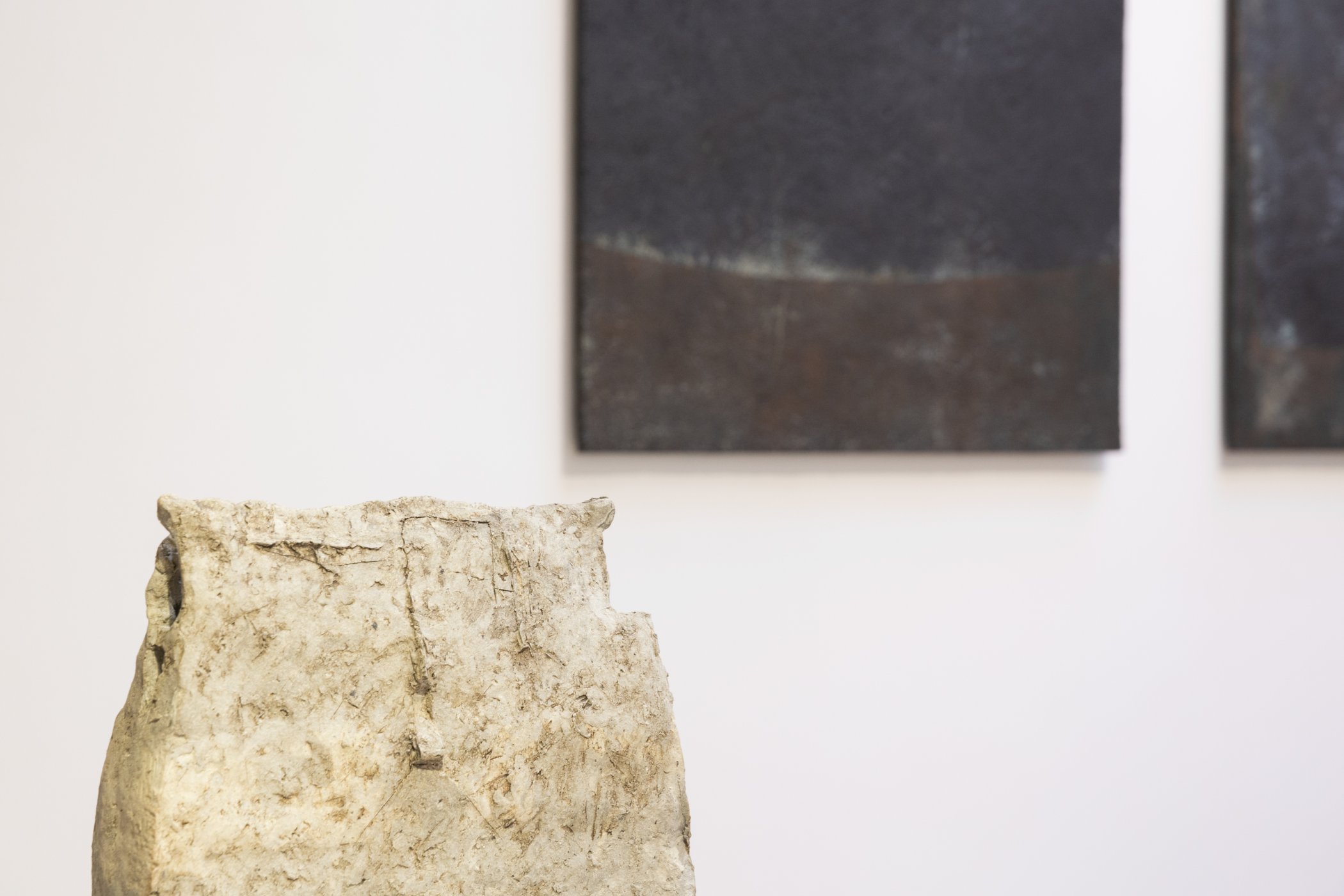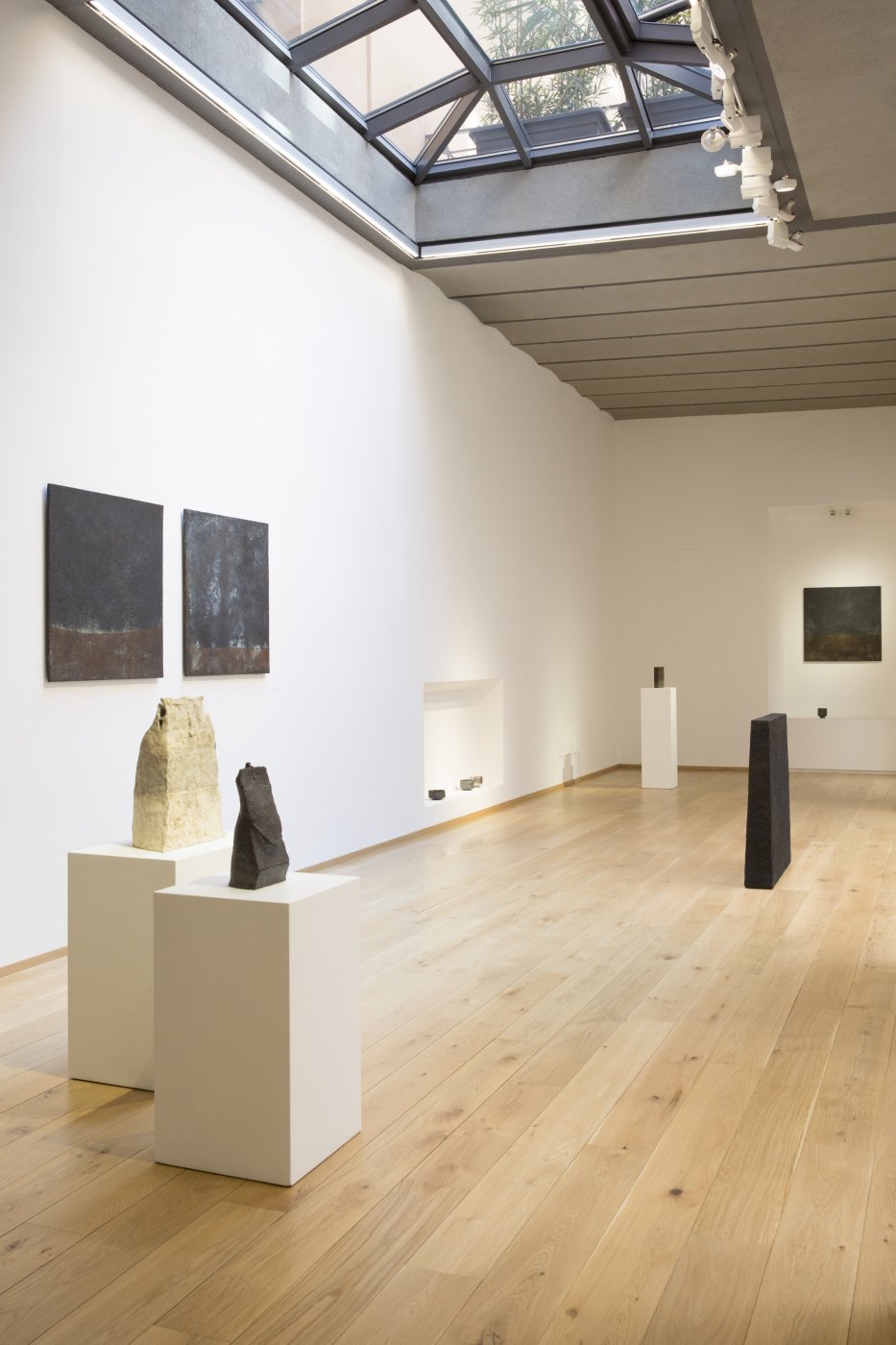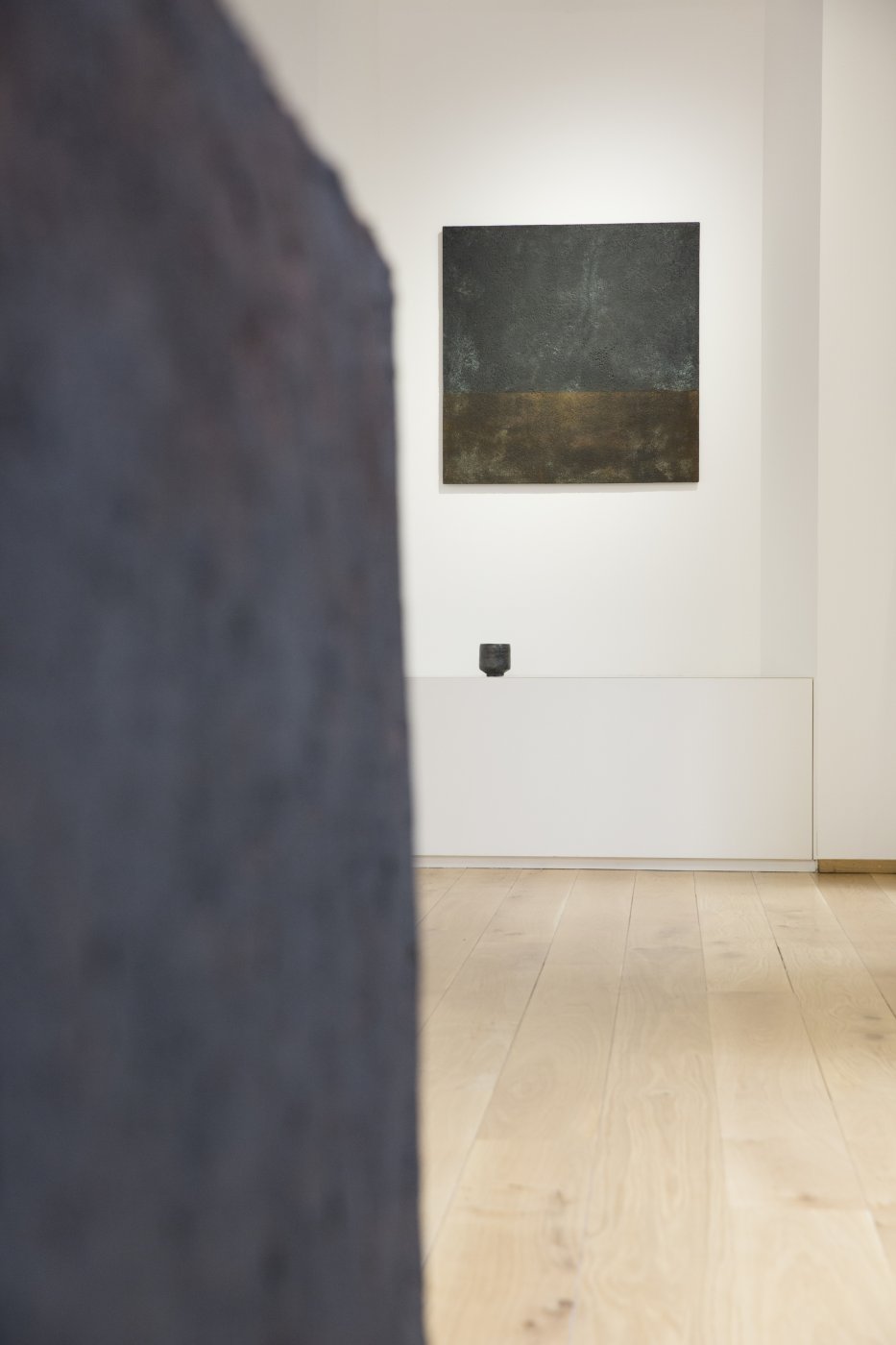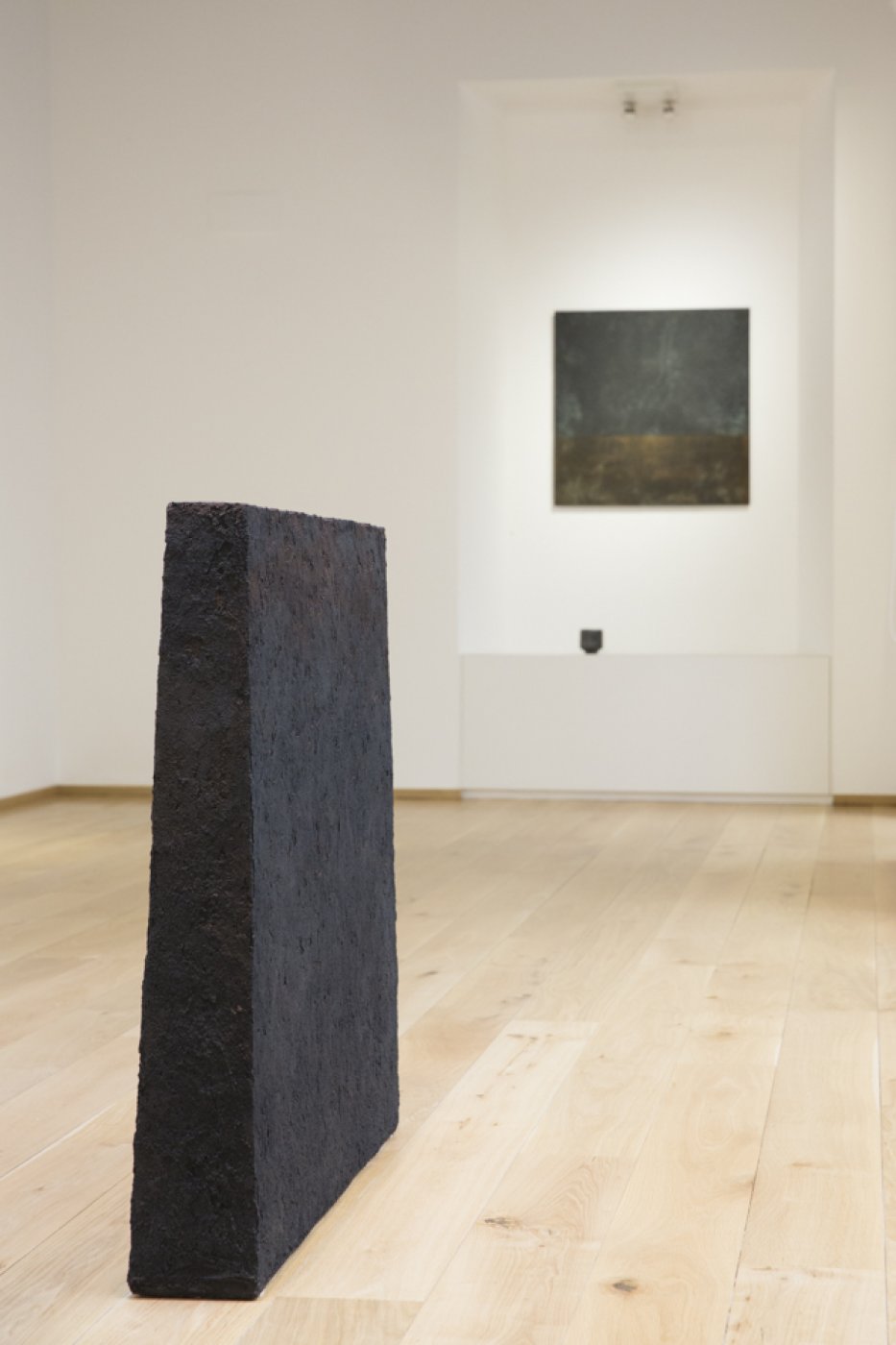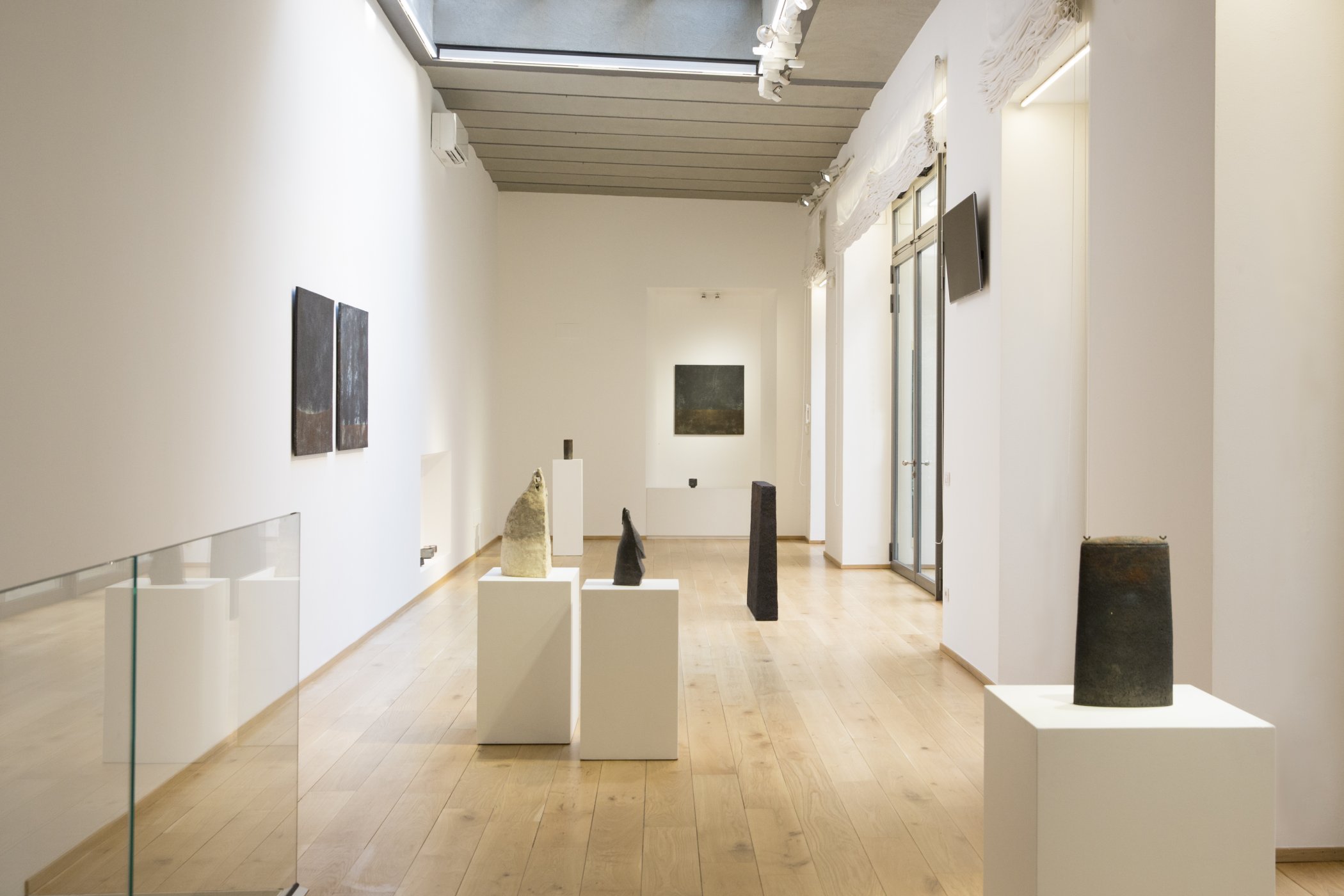Shibui. Keiji Ito, Kazuhito Nagasawa
September 21 - October, 26, 2017
Officine Saffi and Galleria Monopoli are proud to present a double exhibition– two artists in two venues – dedicated to recent works by Keiji Ito (Toki, 1935) and Kazuhito Nagasawa (Osaka, 1968). The artists, both Japanese, use the traditional ceramic medium for sculptures and wall-mounted works of discreet fascination.
The title of the show – Shibui – is a reference to a Japanese aesthetic principle combining contrasting characteristics of roughness and sophistication. The term Shibui was used from the Muromachi period (1336-1573) to describe the astringent taste of unripe Japanese persimmons. Later, the same term was associated with a certain aesthetic taste, describing an object of beauty that is underestimated and bereft of elaborate decoration. The fascination of a shibuiobject lies precisely in this dimension of restrained power, concealed beauty, to be discovered little by little, inviting lengthy observation, even though its value can be understood in an instant.A whole generation, more than thirty years, separates Keiji Ito and Kazuhito Nagasawa in terms of age. This enables spectators to appreciate two remarkable forms of expression, and also invites reflection on the role of Japanese ceramics at an international level. In the non-linear process of the perception of, and exchange with, Western art, modern Japanese art has been able to use contemporary ceramics as an area of such deeply-rooted identity that it does not suffer from influence by heteronymous trends. As a result, it has been able to express its own traditions and local characteristics, absorbing new thought but not necessarily adopting new methods and new forms.Keiji Ito neither makes reference to, nor evokes, primitivism, but rather relives and regenerates it. In this process, he renews contact with the 20th century avant-garde, which, in different directions, explored the fundamental theme of the figure, as in Hito(communicative, without any form of subordinate status, comparable to work by Brancusi, Modigliani, Giacometti's early pieces), and its exterior appearance, as in Omote (in this case, comparisons can be made with the Masksby Tzara, or Man Ray, as well as the many forms of art nègre).Kazuhito Nagasawa was born in 1968, and so he was able to work in times in which problematic factors came into play, starting from the adoption of intimacy with material, not as a predetermined fact but as an informed, critically conscious decision, and from a non-exclusive relationship with clay in an area of activity in which sculptural form has the dual, and exquisitely ambiguous, identity as a work with its own independent meaning, and as an object, which is a way of returning to the thorny question of possible function – suggested or contradicted, suggested andcontradicted – but alienating it to the point that it itself becomes the problematic material from which the work is made, from the point of view both of pure material in a pure form, a substance capable of expressing itself and offering its own fragrant substance, that is colour and the relationship with light, the objective convocation of space and powerful introversion, taking as its point of reference a single, elemental diversity.

